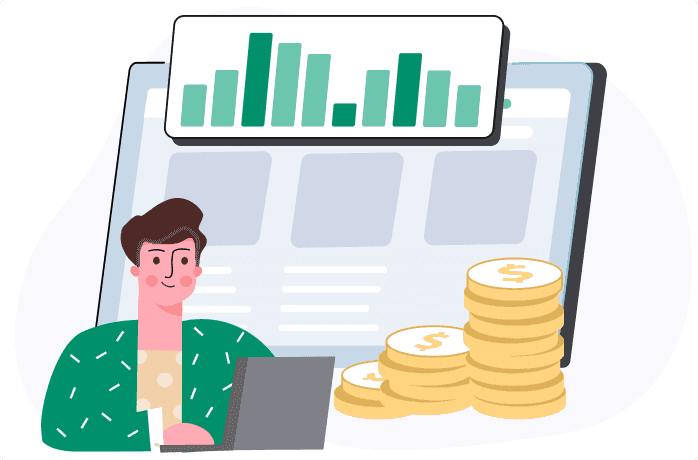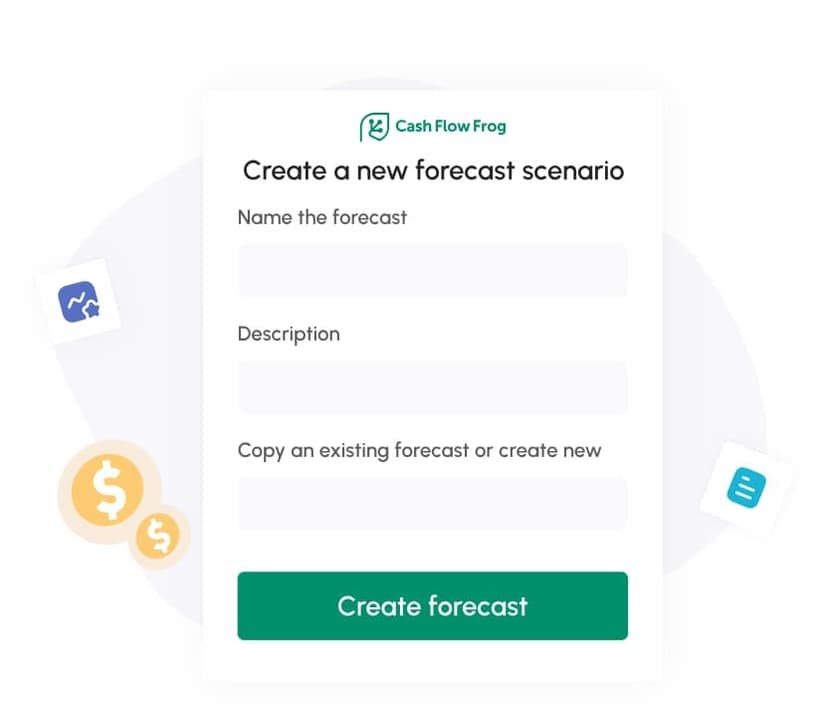10 Ways to Create an Effective Sales Forecast

Creating a sales forecast is an effective way to understand the direction of your business and how it will grow or contract during the forecast period. Whether you’re a small- or large-sized company, you should learn how to forecast sales.
Mastering the Art of Accurate Sales Forecasting
Mastering your forecasts will take a lot of time and patience. Often, your forecast will be inaccurate, but you’ll learn how to increase their accuracy over time.
You can begin working on your forecasts by following the tips and techniques below:
1. Define Clear Objectives
A sales forecast will help you define your objectives. For example, you may find that your sales are slumping in the forecast period, so you’ll want to create objectives that include:
- Increase upselling
- Boost customer retention
- Work to reach higher conversion rates
Before you run a forecast, there aren’t many objectives that you can create. You can work to decide on a reporting period in which you want to reach your goals. For example, you can opt for a 13-week forecast and aim to reach other objectives, such as improving sales by 10% more than what’s projected.
2. Gather Historical Data
Sales forecasts based on historical data tend to be more accurate. You'll want to gather as much historical data as you can so that you can use it in your forecast. Additionally, the data that you create in the future can be used to analyze trends.
You can find tools that allow you to connect to your accounting platform and pull all of the past data that you’ve accumulated.
3. Analyze Market Trends
If you have sales projections or are creating one, reviewing your market trends is important. Market trends may mean:
- Seasonal changes
- Economic changes in the market
- Loss of market share
- Decline in customer appetite
You can and should analyze market trends from past data, current data and what your projections state. For example, in the last quarter, you may notice that you have had a 10% drop in sales, but this is a trend that has hit the entire market.
Due to the drop in demand for your product or service as a whole, you’ll need to factor this into your sales.
If you find that sales will continue dropping over the next quarter, you can try to pinpoint the percentage of decline in sales during the reporting period.
4. Segment Your Market
Sales forecasting can also segment your market. You can and should try to segment markets to learn which are:
- Increasing in demand
- Dropping in demand
Perhaps your sales in Southeast Asia are projected to fall due to economic shifts in the location. You can opt to redirect marketing dollars to the region or stop advertising in the region and focus on one that is growing.
Segmentation empowers you to know which markets are performing best for you and which may be declining enough to abandon.
5. Utilize Sales Analytics Tools
A manual sales forecast is not a worthwhile way to spend your time and resources. Instead, sales forecasting and analytical tools can do the same calculations for you with:
- Faster results
- Greater accuracy
- Fewer errors
SaaS tools can help you begin running forecasts and even connect to your existing accounting platform. Utilizing these tools, such as sales forecasting software like Cash Flow Frog, allows your accounting team or executives to work on core tasks that drive more revenue.
6. Collaborate with Sales Team
When creating your sales forecasts, ensure that you’re collaborating with your sales team. Your team will have insights into the market, your customers and trends that will undoubtedly affect your sales.
Their input will be invaluable in helping you create more reliable and accurate sales forecasts.
7. Consider Seasonality and Trends
Regardless of which sales forecasting methods you choose, you’ll need to take seasonality and trends into account when creating them.
If your business has a high and low season, your forecasts must reflect these periods. Otherwise, they will be unreliable.
A landscaping business, for example, will likely make most of its sales in the summer and fall. Winter is the low season, so sales forecasts must reflect this reduction in sales.
8. Monitor and Update Regularly
Markets and environments can change in the blink of an eye. For this reason, it’s important to continually monitor and update your sales forecasts to reflect current situations.
How frequently you update your forecast will depend on your business. Most companies will find that a monthly forecast review is optimal.
When updating your forecast, ensure that you’re taking the most current market conditions and sales performance into account.
9. Validate and Adjust Assumptions
Many businesses make sales forecast assumptions. These assumptions can be validated through experiments or simulations.
For example, you can use scenario analysis, A/B testing or market testing to gauge how your customers will react to different variables, such as promotions, price or features.
Software or spreadsheets can also be used to simulate different outcomes based on these assumptions. You can then compare the results with current or historical data.
Putting your assumptions to the test will allow you to gauge their validity and make adjustments or discard them entirely if they are not supported by evidence.
10. Scenario Planning
Scenario planning is, essentially, a backup forecasting sales method. Typically, scenario writing is used when it’s difficult to predict a company’s long-term sales plan because of environmental or economic factors.
Scenario planning can be used to analyze market trends, plan for unforeseeable circumstances and help businesses put contingencies in place for existing products. Looking at sales forecasting examples can help you understand how to apply scenario planning effectively across different industries and market conditions.
One big advantage of scenario planning is that it allows you to think more strategically and plan out scenarios for your business. One of these scenarios is likely to play out, which means the company will be prepared to respond. But scenario planning also helps businesses set benchmarks and optimize their business plan to forecast sales.
Engaging in scenario planning regularly can help your business prepare for a wide range of potential events.
Conclusion
These tips and methods for creating sales forecasts will help you improve the reliability and accuracy of your forecasts. Greater reliability and accuracy will mean being able to make data-backed, informed decisions.

Current Liabilities: Meaning, Examples, and How to Calculate Them
Read more

What Is a Finance Charge? A Simple Explanation You’ll Actually Use
Read more

Current Assets Explained: Meaning, Types, and How They Work
Read more

Cash Flow Forecasting Template
Read more

Your Guide To Financial Metrics And KPIs
Read more

10 Cash Management Trends for 2026
Read more
FAQ
Trusted by thousands of business owners
Start Free Trial Now